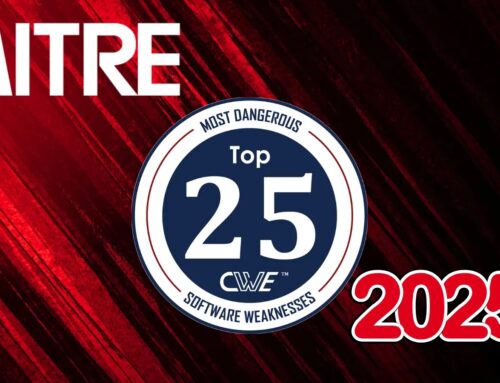
BMW Allegedly Breached by Everest Ransomware Group, Internal Documents Reportedly Stolen
In a significant development that underscores the persistent threat of sophisticated cyber criminal organizations, the notorious Everest ransomware group has reportedly added Bayerische Motoren Werke AG (BMW) to its list of high-profile victims. The group claims to have successfully breached the German automotive giant, exfiltrating a substantial volume of critical internal data. This alleged incident highlights the escalating digital risks faced even by well-established global enterprises.
The Alleged BMW Breach: What We Know
Reports emerging from cybersecurity news outlets, including CybersecurityNews.com, indicate that the Everest ransomware group has publicly claimed responsibility for a data theft targeting BMW. According to their assertions, threat actors gained unauthorized access to BMW’s systems, from which they reportedly exfiltrated an astonishing 600,000 lines of sensitive internal documents. The group has historically been known for its double-extortion tactics, involving both data encryption and the threat of public disclosure of stolen information.
The alleged compromise of proprietary data from a leading automotive manufacturer like BMW presents a range of serious implications. Such information could include intellectual property, research and development data, employee records, financial details, or strategic business plans, all of which could be leveraged for further malicious activities or sold on dark web marketplaces.
Understanding the Everest Ransomware Group
The Everest ransomware group has established itself as a formidable force in the cyber threat landscape. Their modus operandi frequently involves exploiting vulnerabilities to gain initial access, moving laterally within networks, and then exfiltrating sensitive data before deploying their ransomware. This multi-pronged approach maximizes their leverage, compelling victims to pay ransoms not only to decrypt their data but also to prevent the public release of compromised information.
Everest and similar groups often target organizations across various sectors, demonstrating an opportunistic approach to victim selection. Their actions underscore the need for robust, multi-layered cybersecurity defenses, continuous threat monitoring, and comprehensive incident response planning.
Potential Impact of Data Exfiltration
The alleged theft of 600,000 lines of internal documents from BMW could have far-reaching consequences:
- Intellectual Property Theft: Competitors or nation-state actors could gain access to sensitive design specifications, technological innovations, or manufacturing processes.
- Regulatory Fines: Depending on the nature of the data stolen (e.g., personal identifiable information under GDPR or CCPA), BMW could face significant regulatory penalties.
- Reputational Damage: A breach of this magnitude can severely erode customer trust and damage the brand’s reputation for security and reliability.
- Supply Chain Disruption: If the stolen data includes details about supply chain operations, it could expose vulnerabilities that ripple through BMW’s vast network of partners and suppliers.
- Financial Loss: Beyond direct ransom payments (if any were made), the costs associated with forensic investigations, system remediation, legal fees, and potential lawsuits can be substantial.
Remediation Actions and Cybersecurity Best Practices
While the full details of how the alleged breach occurred are not yet public, organizations can take immediate and proactive steps to strengthen their defenses against ransomware groups like Everest:
- Implement Strong Access Controls: Enforce the principle of least privilege. Utilize multi-factor authentication (MFA) for all remote access, administrative accounts, and critical systems.
- Regularly Patch and Update Systems: Keep all operating systems, applications, and network devices patched to close known security vulnerabilities. Organizations should pay close attention to publicly reported CVEs, though no specific CVE has been linked to this alleged incident itself, general patching hygiene is paramount.
- Network Segmentation: Divide networks into isolated segments to limit lateral movement of attackers even if an initial breach occurs. Critical data and systems should reside in highly protected segments.
- Endpoint Detection and Response (EDR)/Extended Detection and Response (XDR): Deploy advanced EDR/XDR solutions to monitor endpoints for suspicious activity, detect threats, and enable rapid response.
- Data Backup and Recovery: Maintain isolated, air-gapped, and immutable backups of critical data. Regularly test backup restoration procedures to ensure business continuity in the event of a breach or ransomware attack.
- Employee Training: Conduct regular cybersecurity awareness training to educate employees about phishing, social engineering tactics, and the importance of strong security practices.
- Incident Response Plan: Develop and regularly test a comprehensive incident response plan. This plan should clearly define roles, responsibilities, communication strategies, and technical steps to take during and after a cyber incident.
- Threat Intelligence: Subscribe to and actively monitor threat intelligence feeds to stay abreast of the latest tactics, techniques, and procedures (TTPs) used by ransomware groups like Everest.
Conclusion
The alleged data breach at BMW by the Everest ransomware group serves as a stark reminder that no organization, regardless of its size or sophistication, is immune to cyber threats. The sheer volume of data reportedly exfiltrated – 600,000 lines of internal documents – highlights the potential for catastrophic impact on corporate operations, intellectual property, and reputation. Organizations must continually reassess and fortify their cybersecurity postures, prioritizing proactive defense strategies, robust detection capabilities, and swift incident response readiness to navigate the ever-evolving landscape of cyber warfare.





